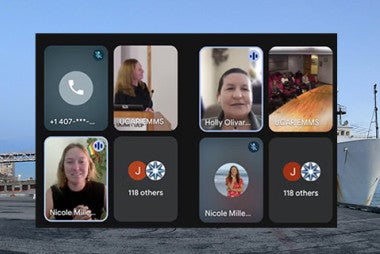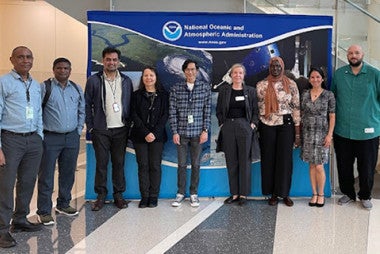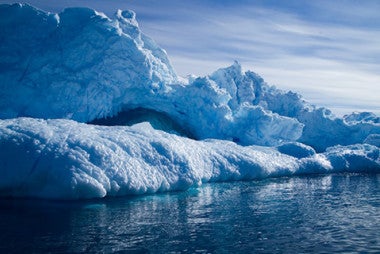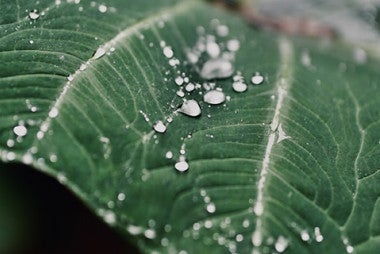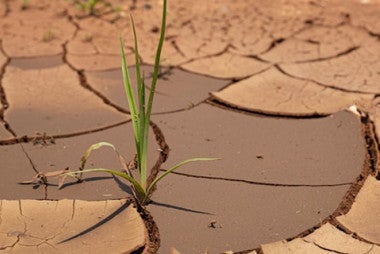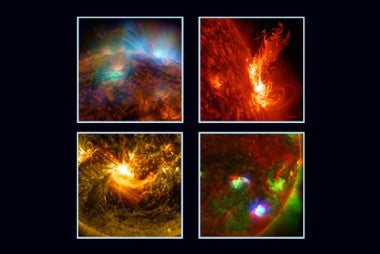NOAA C&GC Fellow studies microscopic organisms, ocean temperature trends

Ronnakrit Rattanasriampaipongone, a NOAA Climate and Global Change (C&GC) Postdoctoral Fellow, published the results of research on a paleoclimate proxy, known as TEX86, that scientists use to study historical ocean temperatures.
Credit: R. Rattanasriampaipongone
Ronnakrit (Ronnie) Rattanasriampaipongone, a NOAA Climate and Global Change (C&GC) Postdoctoral Fellow, a paleoceanographer and early-career scientist, recently published the results of research that adds to the body of knowledge around a paleoclimate proxy, known as TEX86, that scientists use to study historical ocean temperatures.
TEX86 is one of a few ocean temperature proxies available today for scientists to learn about earlier, warm climates. The study emphasizes the need to consider how historical nutrient levels would impact marine archaea – microscopic organisms that are part of the family of marine plankton – in past oceans. Understanding their role in the ocean ecosystem can be used to construct an accurate reanalysis of ocean temperature trends for the past 100 million years.
The TEX86 proxy is based on fats stored in cell membranes of marine archaea that play significant roles in ocean nitrogen cycles. Rattanasriampaipong demonstrates how these microbes respond to low nutrient conditions in the ocean and quantifies temperature biases that occur in the proxy when these organisms undergo nutrient stresses.
A more accurate assessment of ocean temperatures over time will improve climate models as scientists seek to better understand the role of oceans in our evolving climate.
These experiential learning opportunities are central to training the next generation of scientific leaders. To that end, the UCAR | Cooperative Programs for the Advancement of Earth System Science (CPAESS) manages the C&GC postdoctoral fellowship program for the National Oceanic and Atmospheric Administration (NOAA).
Research Highlights
Ronnakrit (Ronnie) Rattanasriampaipongone
NOAA C&GC Postdoctoral Fellow
PhD Institution: Texas A&M University
Host: Dr. Jessica Tierney, University of Arizona
Marine archaea—the ocean’s chief ammonia oxidizers—build their cell membranes from specialized lipids whose structures shift in response to environmental conditions. TEX₈₆, a proxy based on these lipids, has opened a window on surface-ocean temperatures over the past 100 million years, especially when other paleoclimate proxies fail.
However, laboratory experiments have shown that nutrient availability can bias TEX₈₆: under low ammonia concentrations, these archaea grow much slower and reorganize their membranes in a way that mimics warmer waters. Because direct measurements of ammonia (and nitrite---the product of archaeal ammonia oxidation) are sparse at the global scale, we show that nitrate—though not a perfect analogue—can serve as a practical, widely available proxy for the "nutrient stress." By comparing surface ocean nitrate with sedimentary TEX₈₆ records, we find that regions of low nitrate systematically yield inflated TEX₈₆ values.
For paleoclimate reconstructions, failing to account for this nutrient effect risks overestimating past surface-ocean warmth and miscalibrating climate-model comparisons. Future studies using TEX₈₆ should therefore incorporate nutrient proxies—ideally nitrate or other available measures—to correct for nonthermal biases and produce more accurate temperature histories.
[R. Rattanasriampaipongone]
Read more about Rattanasriampaipongone’s research published in Geophysical Research Letters in June 2025.

